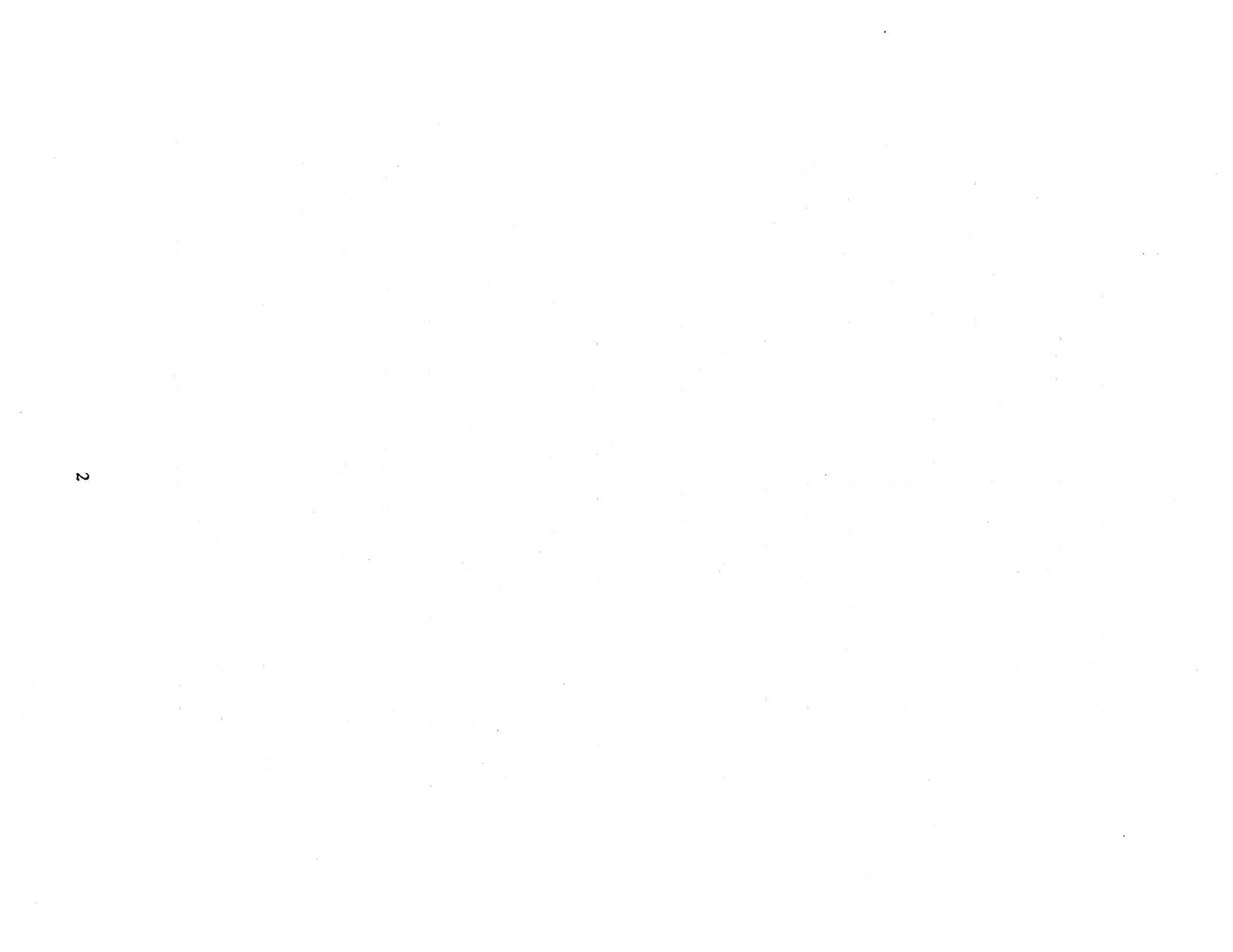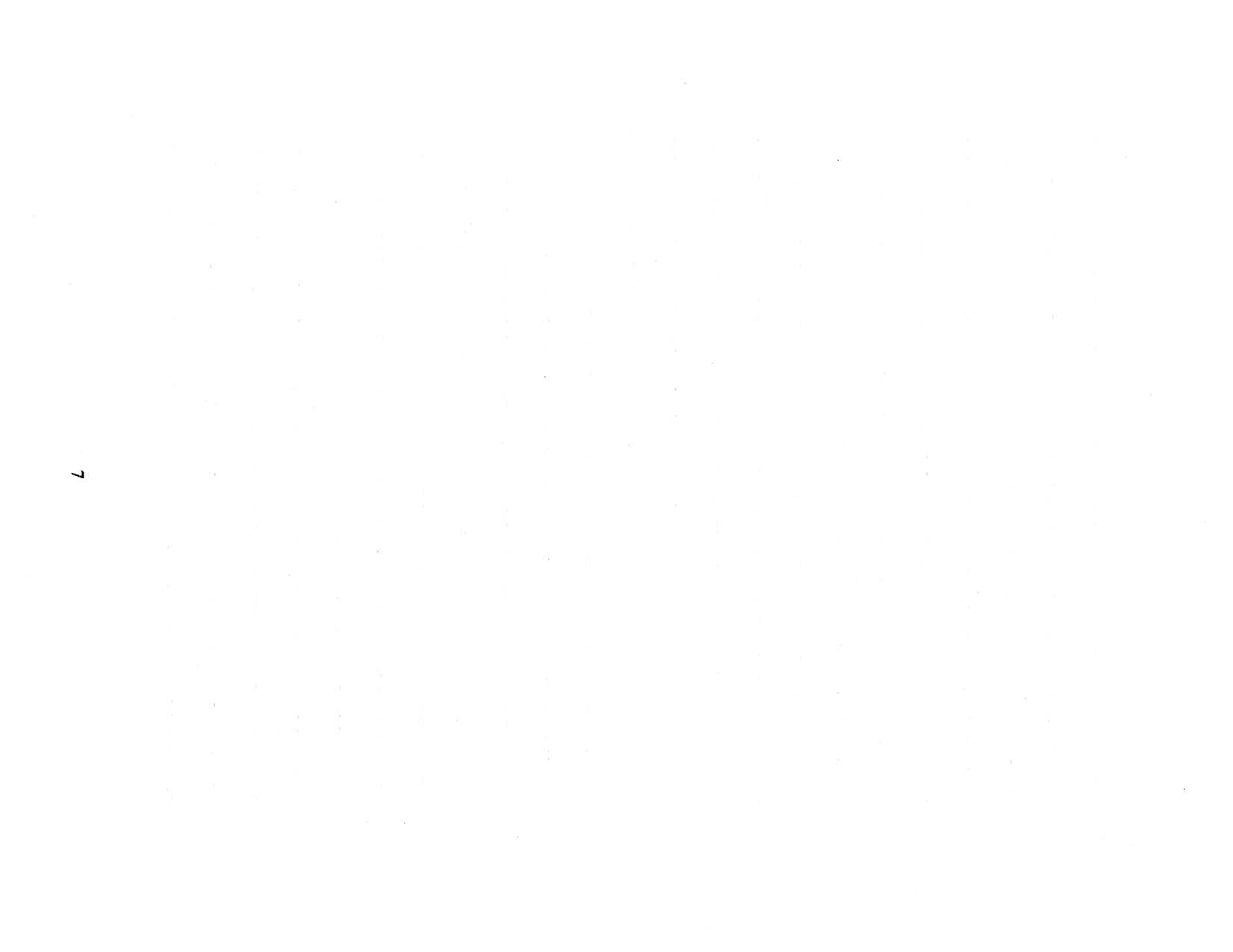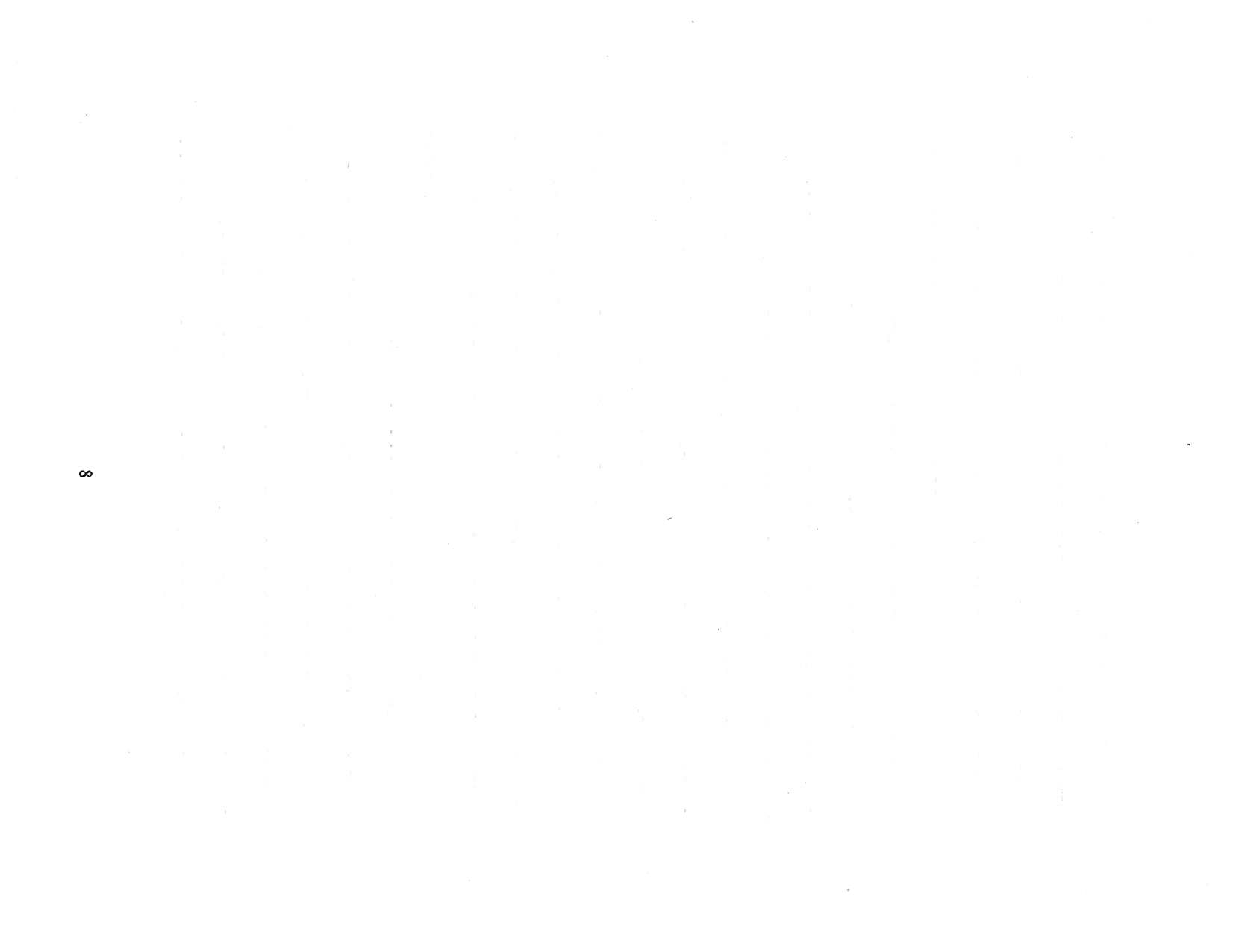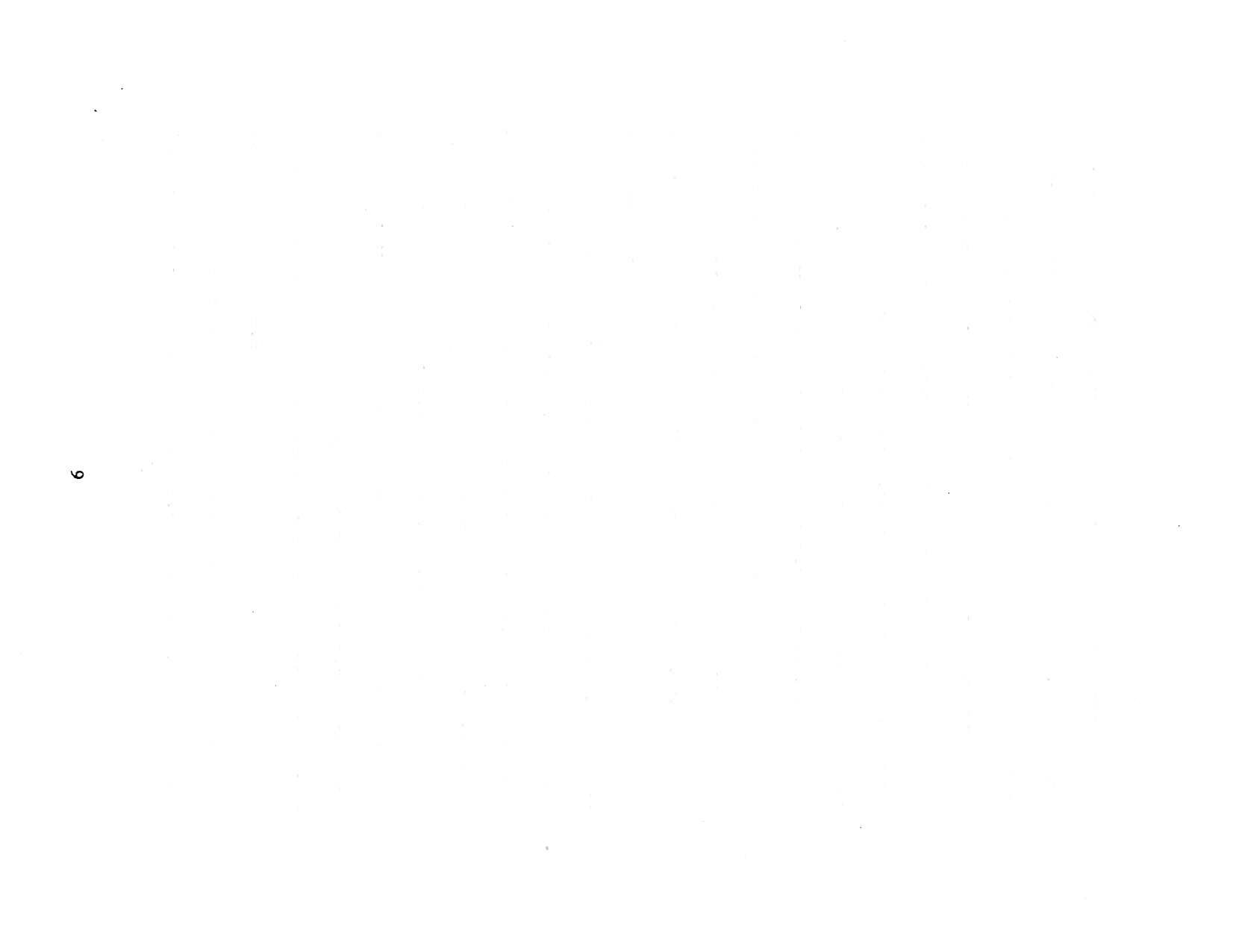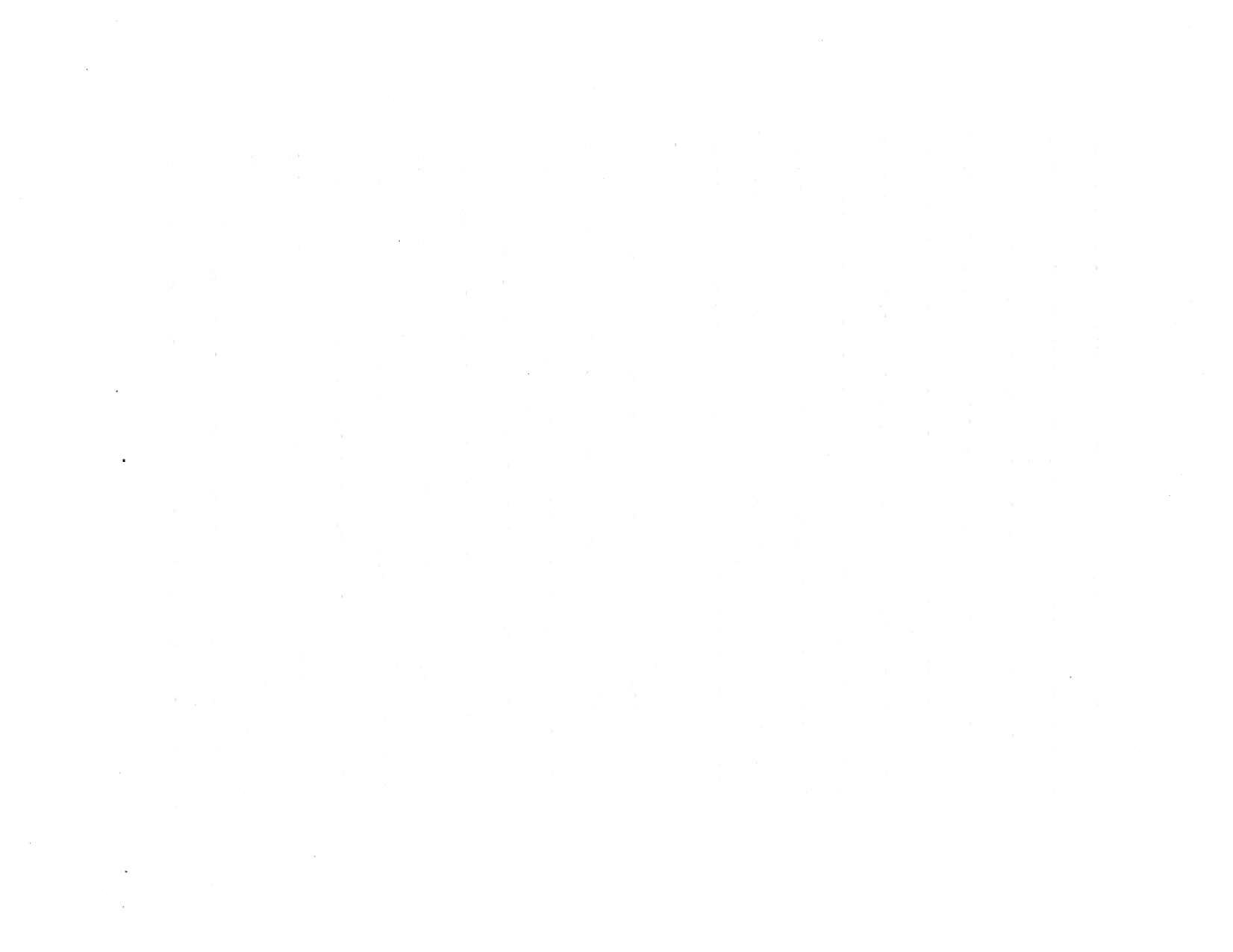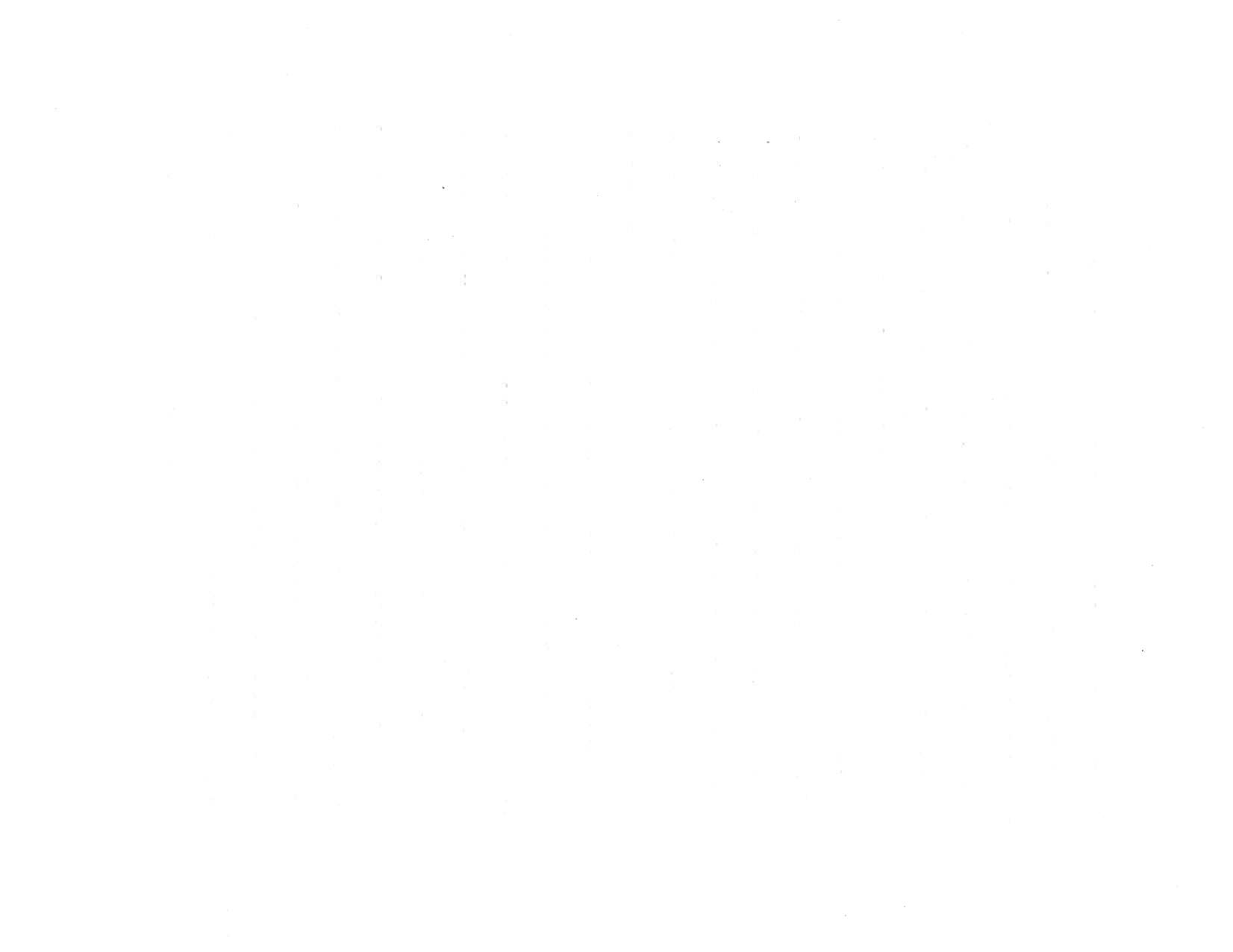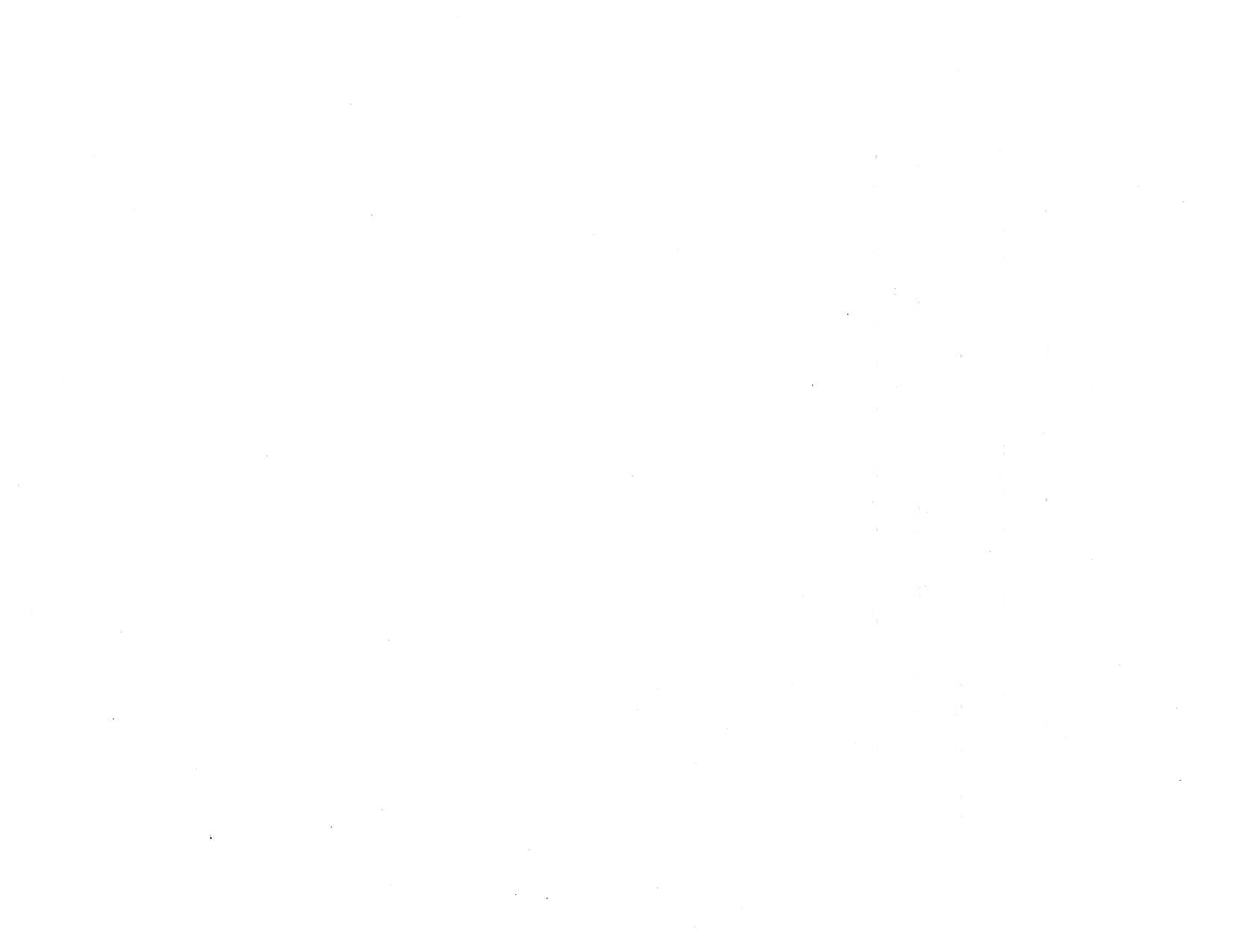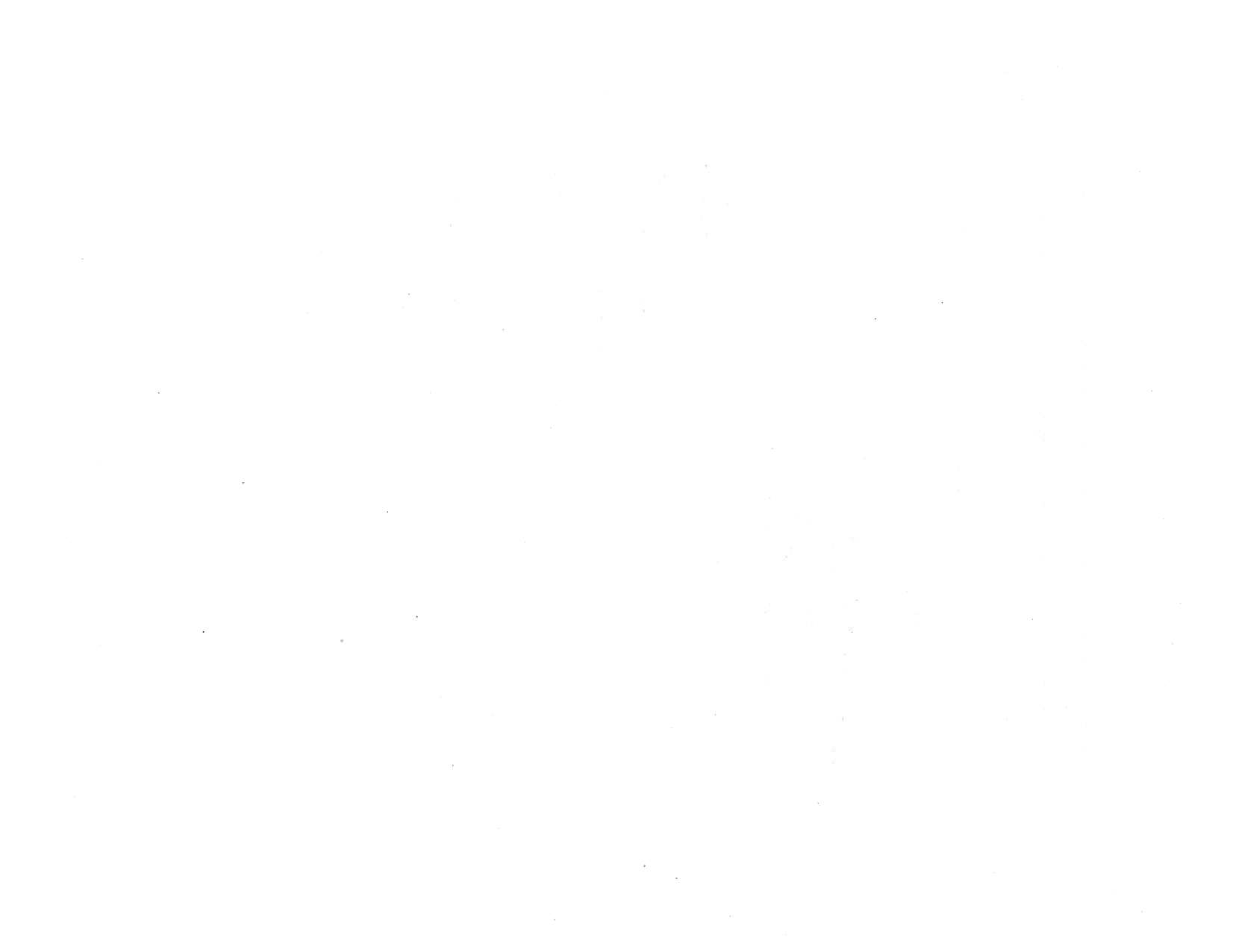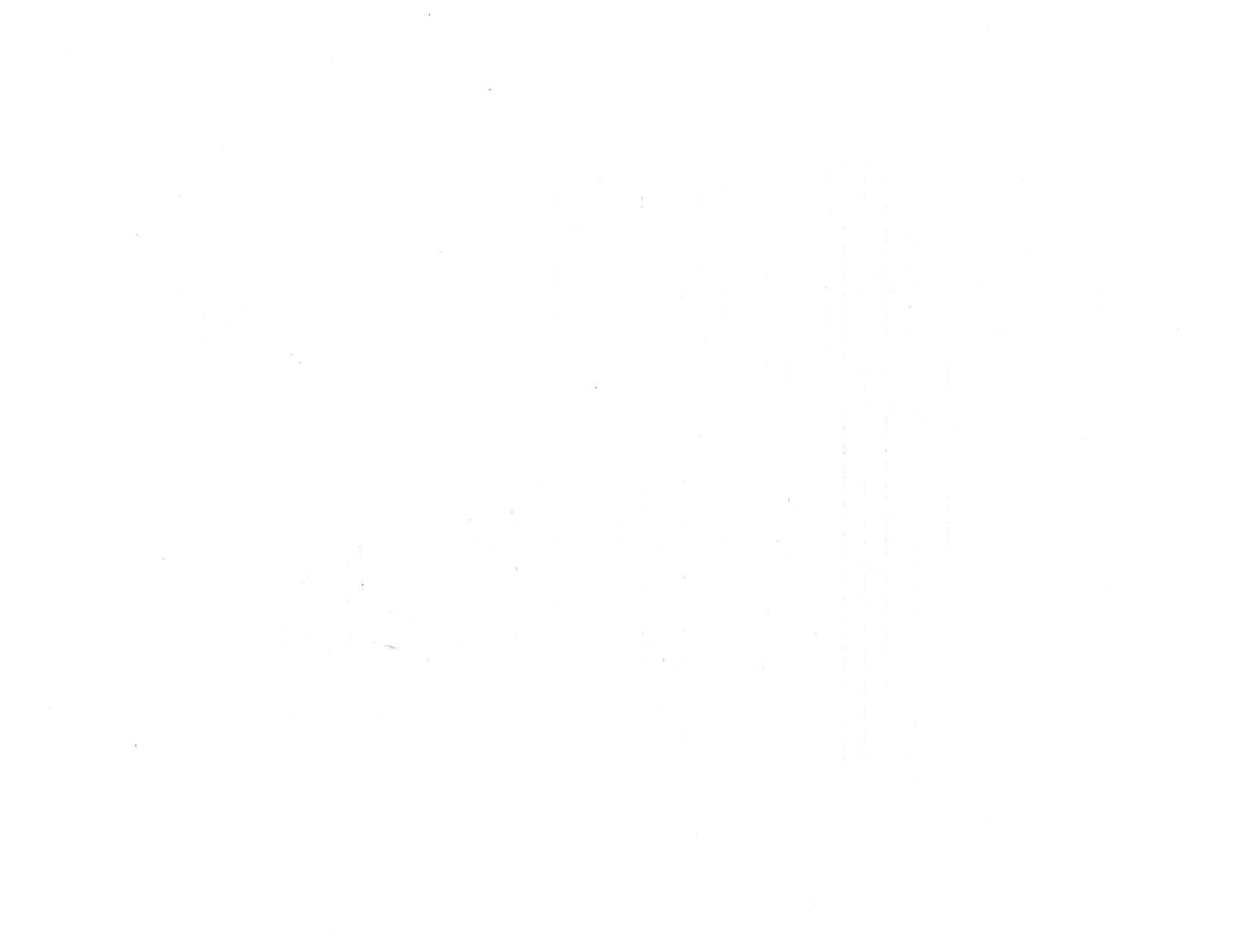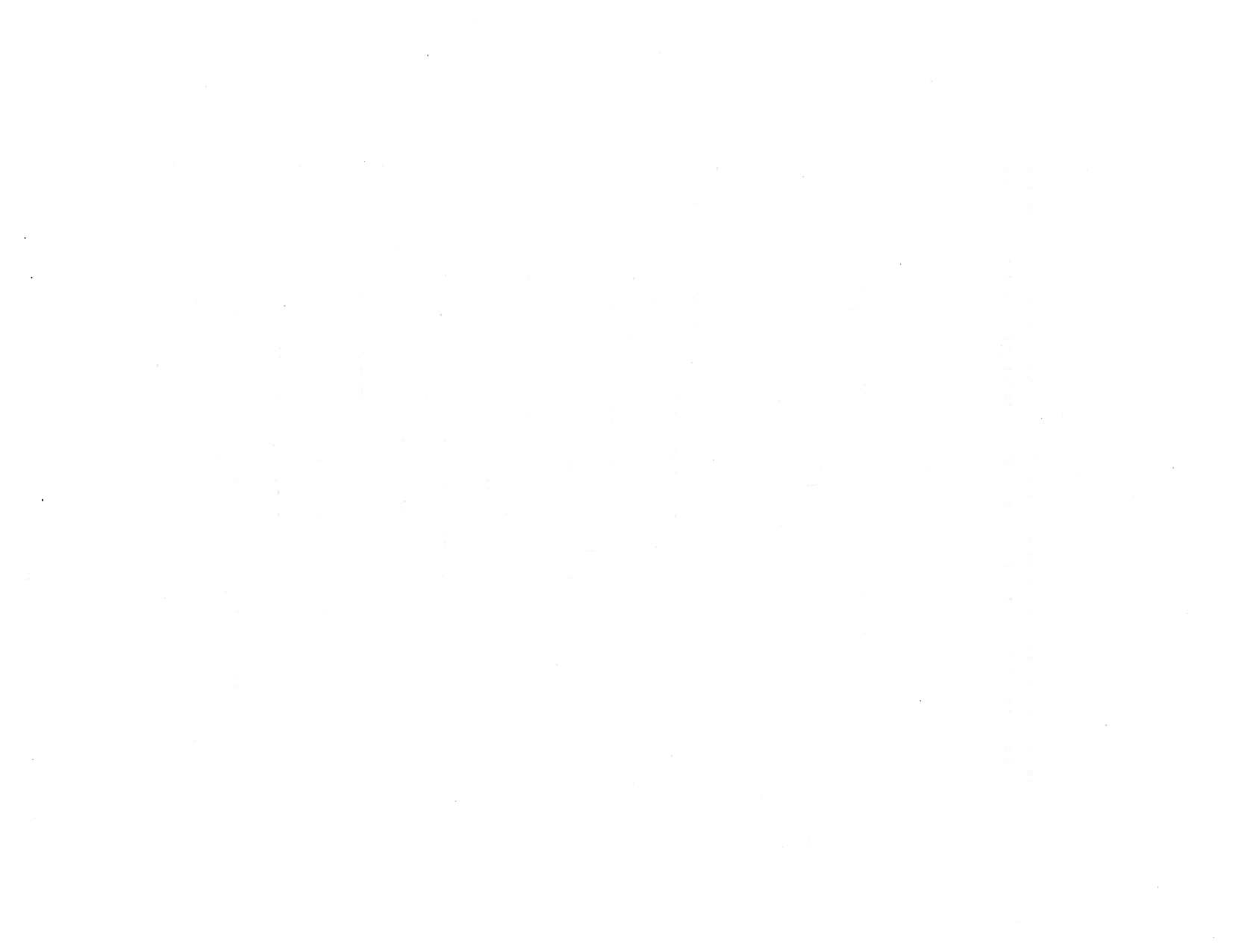BEFORE
THE ILLINOIS
POLLUTJON
CONTROL
BOARD
N
THE MATTER OF:
)
)
NO
TRADING
PROGRAM:
)
R06-22
AMENDMENTS
TO 35
ILL. ADM.
CODE
)
(Rulemaking
- Air)
PART2I7
)
NOTICE
TO:
John Therriault, Assistant
Clerk
Alec
M.
Davis
Timothy
Fox,
Hearing
Officer
illinois
Environmental Regulatory
Group
Illinois
Pollution Control Board
3150
Roland Ave.
State
of Illinois Center
Springfield,
IL
62705-5776
100
West
Randolph, Suite
11-500
Chicago,
illinois 60601
Mitchell
Cohen, Chief Legal
Counsel
Department
of Natural Resources
Kathleen
C.
Bassi
One
Natural Resources
Way
SchiffHardin,
LLP
Springfield,
Illinois
62702-1271
6600
Sears
Tower
233
5.
Waeker
Drive
Katherine Hodge
Chicago,
IL 60606-6473
N. LaDonna
Driver
Monica
T.
Rios
Hodge Dwyer
& Driver
3150 Roland Ave.,
P0 Box 5776
Springfield,
IL
62705-5776
PLEASE
TAKE NOTICE
that I
have today filed with
the
Office of
the Pollution Control
Board
the
attached RESPONSE
TO MOTION
FOR
EMERGENCY
RULE
and
MOTION
FOR
EXPEDITED
ACTION
ON
THE
ILLINOIS
ENVIRONMENTAL
REGULATORY
GROUP’S
ALTERNATIVE
PROPOSAL.
and
AFFIDAVIT
OF ROBERT KALEEL
a copy of
which
is
herewith
served
upon
you.
ILLINOI
ENVJR
ENTAL
PROTECTION AGENCY
By:
Annet
Godiksen
Assistant
Counsel
DATED:
August 13, 2009
Division
of Legal Counsel
P.O.
Box 19276
Springfield, Illinois
62794-9276
217.782.5544
217382.9143
(TDD)
Electronic Filing - Received, Clerk's Office, August 13, 2009 (PC #14)
BEFORE THE
ILLINOIS
POLLUTION
CONTROL
BOARD
IN THE
MATTER OF:
)
NO
TRADING
PROGRAM:
)
R06-22
AMENDMENTS
TO 35
ILL.
CODE
)
(Rulemaking - Air)
PART217
)
RESPONSE TO
MOTION
FOR
EMERGENCY
RULE
and MOTION
FOR
EXPEDITED
ACTION ON
THE
ILLINOIS ENVIRONMENTAL REGULATORY GROUP’S
ALTERNATIVE PROPOSAL
NOW
COMES
the Illinois
Environmental Protection
Agency (“Illinois EPA”), by and
through its attorneys, and
pursuant to 35 Ill. Adm. Code 101.500 and 102.2 12(a) and (d), hereby
files a Response to the
Motion
for Emergency Rule and Motion for Expedited Action on the
Illinois
Environmental
Regulatory
Group’s Alternative Proposal, and, respectfully requests that
the
Illinois Pollution Control
Board (“Board”)
deny these
Motions.
In support of its
Response,
the Illinois
EPA states
as follows:
I.
INTRODUCTION
1.
The
Clean
Air
Interstate
Rule
(“CAR”)
was promulgated
by the United States
Environmental
Protection
Agency
(“USEPA”) on May 12, 2005. 70 Fed. Peg. 25216. Note:
there have also been additional
amendments since 2005.
2.
The
CAR provides
that the
NOx State Implementation
Plan
(“SIP”) Call Trading
Program is
sunsetted after the
2008
control period and that
states have a continuing obligation
to
meet the NOx Budget for
Non-Electricity
Generating Units
(“EGUs”).
The
CAIR does not
mandate how states
must
comply
with
this requirement. Id.
3.
On January 19, 2006,
the Illinois EPA filed the present rulemaking with the
Board
regarding
the Nitrogen
Oxide (“NOx”)
Trading
Program:
Amendments to
35
Ill.
Adm.
Code 217
to
address minor clean-up issues.
Electronic Filing - Received, Clerk's Office, August 13, 2009 (PC #14)
4.
On
December
23, 2008,
the
United
States
Court
of Appeals
for the
District
of
Columbia,
in
an
appeal
challenging
different
aspects
of the
CAR,
remanded
CAR
without
vacatur.
North
Carolina
v. EPA,
550
t.3d 1176
(D.C.
Cir.
2008).
The appellate
court
left
intact
the states’
obligation
to
meet
the
NOx
SIP
Call
Budget.
5.
Jn
early 2009,
in
response
to the
North
Carolina
ruling,
the
Illinois
EPA began
the
regulatory
development
process.
During
this
time
period
the Illinois
EPA
had discussions
with
USEPA
regarding
its
concerns
with
the short
time-frames
available
for adoption
of
a
NOx
Budget
rule
for
Non-EGUs.
The
short time-frames
are
of
concern,
as prior
to the
adoption
of a
rule
the USEPA
must
approve
both
the
State’s
rule
and
the allocation
allowances
to
subject
units.
6.
On
August
3,
2009,
Illinois
Environmental Regulatory
Group (‘tERG”)
filed
a
Motion
for Emergency
Rule
and
a Motion
for
Expedited
Action
on IERG’s
Alternative Proposal
(“Motions,”
collectively).
7.
In
an
order
dated
August
6, 2009,
the
Board
directed
participants
to file
responses
to
the Motions
by no
later than
Thursday,
August
13,
2009.
II.
THE
MOTIONS
SHOULD
BE
DENIED
FOR
PROCEDURAL
DEFICIENCiES
8.
IERG’s
Motion
for Emergency
Rule
is unfounded,
in that
an
emergency
situation
does not
exist.
Further,
even
if the
Board
should
find that
an
emergency
situation
exists,
the
proposed
approach
does
not appropriately
address
the issue
and
is not
federally
approvable.
In
Attachment
A, the
Illinois
EPA
has
provided
regulatory
language
that
should address
any
concerns
appropriately.
9.
IERG’s
Motion
for
Expedited
Action
on
IERG’s
Alternative
Proposal
(“Motion
for
Expedited
Action”)
is also
unfounded
in
that
an
emergency
situation
does
not
exist
and,
as is
the
case with
the
Motion
for
Emergency
Rule, even
if
Board
finds
that
an
emergency
situation
2
Electronic Filing - Received, Clerk's Office, August 13, 2009 (PC #14)
exists and
thus
that there
is
reason
to expedite
action
on IERG’s proposal, that proposed
alternative
does
not
appropriately address
the issue and is not
federally approvable.
10.
Another
deficiency in the
Motions is that, even if the Board finds some merit in
ERG’s
arguments
for
the Alternative
Proposal, the means by which IERG is presenting the
Alternative Proposal
is itself
flawed.
Specifically,
the
Alternative
Proposal is more correctly
a
separate
proposal from
the subject
matter and scope of the present rulemaking. Accordingly, the
Motions
should
not
be considered
within
the context of this rulemaking
docket;
rather,
IERG
should
have
submitted
its proposal as
a separate stand-alone rulemaking. The Board should not
allow
IERG
to shoehorn
its Motions into the
current proceedings.
11.
Furthermore, the Motion for
Expedited Action contains
no
environmental,
technical, or
economic support
for a regulatory proposal addressing the federal CAIR
requirements for Non-EGUs.
The
Motion for Expedited Action
also
does not
include the
required petition
of 200 signatures
as required pursuant to Section 28 of the
Environmental
Protection
Act (“Act”) (415 ILCS
5/28)
and
35
Ill.
Adm.
Code 102.202(g) and 102.410(b)).
Another
omission
by ERG is an acknowledgment that an emergency rule, even if allowed, is
only effective for up
to
150
days as set
forth in Section
5-45(c) of
the Illinois
Administrative
Procedure
Act (415
ILCS
5-45(c)).
There is no provision for
any
regulatory
amendment that
would
be in place
following
the expiration
of 150 days.
12.
Should the Board
nonetheless
desire to proceed with a short term solution, the
Illinois EPA is hereby
submitting
proposed regulatory language which does not have the
aforementioned
problems associated with the Motion for
Expedited Action but addresses
IERG’s
concerns in an appropriate manner. (See Attachment A.)
13.
Regardless
of
whether
the Board treats the requests
by
IERG
as a new rulemaking
3
Electronic Filing - Received, Clerk's Office, August 13, 2009 (PC #14)
or
somehow
part
of
the
present
rulemaking, the
Motion for Emergency
Rule
fails
to
satis&
the
content
requirements
for
adoption
of
Board
emergency regulatory
proposals
under 35 111. Adm.
Code
102.612.
Section
102.612 requires that the
Board
must
find
that a situation exists
which
reasonably
constitutes
a threat to the public
interest,
safety,
or
welfare in order to
adopt
an
emergency
rulemaking.
In its Motion for
Emergency
Rule,
IERG
makes
the
wholly
unfounded
allegation
that the Illinois
EPA has violated Section
9.9
of the Act
by virtue of
failing
to
address
the
NOx
SIP
Call
Trading
Program for
Non-EGUs.
However,
IERG
fails
to
articulate,
beyond
speculation
(which
distinguishes
this
request from other more
firmly
grounded Board emergency
rulemakings
that were cited
to by
IERG),
that there is
in
fact
any
such
violation
or
that
there is
any
real
threat
as described.
14.
Similarly,
regardless
of the
classification
as
new
rulemaking
or
part
of
this
rulemaking
docket,
the Motion
for Expedited
Action fails to
satisfy
the
content
requirements
for
Board
regulatory
proposals
under
35 Ill. Adm.
Code 102.202.
Firstly,
IERG’s
proposal is not
accompanied
by a
statement
of
reasons
that includes all the
requirements
of 35 III.
Adm. Code
102.202(b).
Second,
the
proposal
is not accompanied by
a
petition
signed by at
least 200
persons,
as
required by
Section 28 of
the Act and 35
Ill. Adm. Code 102.202(g)
and 102.410(b).
Third,
the
proposal
is not
accompanied
by any
justification
for
the inapplicability
or
unavailability of
inapplicable
or
unavailable
information
pursuant
to 35 Ill.
Adm.
Code
102.202(k).
15.
The
Motion
for
Expedited Review
is not properly
inciuded
within the
current
rulemaking
docket
and thus
must
be seen and
treated as an attempt
to
establish a
new
regulatory
proposal.
The
Board
should
not allow this attempt
by
1ERG
to completely sidestep
all
requisite
requirements
for a
new
rulemaking
proposal,
which is
what
would
result
should
IERG’s
motions
4
Electronic Filing - Received, Clerk's Office, August 13, 2009
be
granted
in this instance.
The
scope of this
rulemaking
docket does not
include
the
scope
or
subject
matter
of the
Alternative
Proposal being
proffered
by
IERG.
The language
in
IERG’s
Motion
for Expedited
Action
is
not amendatory
to, or
modifying,
the
rulemaking
proposal
initiated
here by
the
Illinois EPA.
The
Alternative Proposal
instead
suggests language
of a
wholly
different
substance
and
thus
cannot be considered
in any
way
supported by the
Illinois
EPA’s
support
for its
own
rulemaking
proposal.
16.
The regulatory
proposal
submitted
by
the
Illinois EPA in support
of
R06-22
was
to
address minor clean-up
issues
not to establish
a new federal
program for this group
of
sources.
It
is true that the
present
proceedings
were
held in abeyance in recognition
of the
federal
court’s
review
of issues
that
concerned
CAIR.
However,
if the illinois EPA
were
to properly
address
CAIR for
the
group
of sources
identified
by
LERG
in
its Alternative Proposal,
a new
and
separate
regulatory
proposal that
complies
with the
Board’s
procedural rules for
regulatory
proposals
would
need
to
be
filed.
The
failure
of
IERG
to take
such appropriate action
should not
be
overlooked,
and
its
attempt
to
roll
its Alternative Proposal
into the present
rulemaking
should
not
be rewarded.
17.
A new
rulemaking
on
the topic
of the Alternative
Proposal, which the illinois
EPA
does
not believe is necessary,
should
seek to
amend Part 225. Such
an approach
would
be
consistently
situated
with
other
regulations
concerning
CAIR.
18.
Hence,
the
Illinois
EPA
would request
that
the
Motions
be denied
as
not
meeting
the
Board’s
procedural requirements
for
rulemakings.
19.
There
is no
emergency with
respect to
Non-EGIJs and
NOx SIP Call
requirements.
Section 27(c)
of
the Act
provides:
When
the
Board finds
that a situation
exists
which
reasonably
constitutes
a threat to
the
public
interest, safety
or
welfare,
the
Board
may adopt
regulations
pursuant
to
and in
5
accordance
with
Section
5.02
of the Illinois
Administrative
Procedure
Act.
Section
5-45
of the Illinois
Administrative
Procedure
Act provides
in
pertinent part:
(a)
“Emergency” means the
existence of any situation
that
any agency finds
reasonably
constitutes
a threat to
the
public interest,
safety,
or
welfare.
(b)
If any
agency finds that an
emergency exists that
requires
adoption
of a rule upon
fewer
days
than is required
by
Section 5-40 and
states in
writing its reasons
for that
finding, the agency may
adopt
an
emergency
rule
without
prior notice or hearing
upon
filing
a
notice of emergency rulemaking
with
the
Secretary of
State under Section
5-70.
The
notice shall
include
the
text of the emergency
rule
and shall
be
published
in the
Illinois Register.
Consent orders or
other court orders adopting
settlements
negotiated
by
an
agency
may be adopted under
this
Section.
Subject to
applicable constitutional
or
statutory
provisions,
an
emergency
rule becomes effective
immediately
upon
filing under
Section
5-65
or
at
a
stated date less than
10 days thereafter.
The agency’s
finding and
a
statement
of
the specific
reasons for the finding
shall be
filed
with the
rule. The agency
shall
take
reasonable
and
appropriate
measures to make emergency
rules
known
to the
persons
who may be
affected
by
them.
20.
When
USEPA
adopted
the
CAIR, it made
two amendments
to the requirements
for
the NOx SIP Call as
it pertained to
Non-EGUs, First, USEPA
stated
that it
would
no longer
carry
out
any
of the functions
set
forth for
USEPA under the NOx
SIP
Call. 40 CFR
51
.121(r)(l). Second, USEPA
required that states
satisfy
the
same
portion
of the
State’s
NOx
emission
reduction
requirements under the
NOx SIP Call
for
Non-EGUs.
40
CFR 51
.12l(r)(2).
The
CAR amendments
to the
NOx
SIP Call
did not,
however, require
that
Non-EGU5
be
included
in
the
CAIR NOx Ozone
Season
Trading Program.
21.
The
Illinois EPA
and the USEPA have
had
discussions concerning
how
the
outstanding
NOx SIP
Call
budget
requirement
for the 2009
ozone
control period can
be
met.
The USEPA
has
indicated
that
a demonstration
using reported
emissions
from
the
applicable
sources
demonstrating
that the budget
has been met
would suffice
in
lieu
of
having adopted
measures.
The
Illinois
EPA will
prepare and submit this
documentation
at the conclusion
of
the
ozone
season, once
the appropriate emissions
data is
available.
22.
The responsibility
of
determining
how federal
Clean
Air Act (“CAA”)
6
Electronic Filing - Received, Clerk's Office, August 13, 2009 (PC #14)
requirements
will
be
met
in
the
State
of Illinois
is the
responsibility
of the
Illinois EPA. Section
4
of
the
Act designates the
Illinois EPA as
the
agency
responsible
for
administering the
CAA
obligations
in
Illinois.
If
USEPA
finds
that a
state has failed
to
act
on
an obligation under
the
federal Clean Air
Act,
it sends
a
SIP Call or
notification
to
the
state identifying
the deficiency
and
starting
a
sanctions
clock
or
imposing a federal
implementation
plan (“FTP”).
USEPA
does
not prosecute individual
companies
when
a state has failed to adopt
an applicable
program.
23.
The Illinois EPA
has
not received
such a notification
concerning
the obligation
to
meet the
requirements in
Section
40 CFR
51.121 (r)(2);
to the
contrary,
the
Illinois
EPA has
received
from
USEPA
every indication
that a demonstration
using reported
emissions
from
the
applicable
sources
demonstrating
that
the budget
has
been
met
would
suffice.
Hence, on
the
federal
level
there
is no emergency either
to the State or to individual
companies for failure
to
address this requirement
through rulemalcing.
24.
1ERG
raises the specter
that Section
9.9 of the Act
requires that
the obligations of
40 CFR 51.121 (r)(2)
be met through
a
trading
program.
The Illinois
EPA does not
agree with
this interpretation
and
believes
that the
obligations
were
met when
the Board adopted
NOx
SIP
Call
rules for engines, kilns,
Non-EGUs,
and EGUs as set
forth in
35 III.
Adm.
Code 217,
Subparts
Q
(in part),
T,
U
and
W.
Furthermore,
there
is no indication
that
the General Assembly
could
have foreseen
the
sunset of the
NOx
SIP
Call
Trading
Program
and the adoption of
the
CAIR
program,
such that
Section
9.9 of the Act could or
should be
read or
interpreted
(as
IERG
attempts to
posit)
to require a
trading
program. In the
alternative,
if
Section
9.9
were
to be
interpreted
as requiring
that a
trading
program
be
adopted
to
address
the budget
obligation, the
burden
of
proposing
such a program
lies with
the
Illinois
EPA. Jndividual
sources cannot be
sued for lack of compliance
with
the
NOx
SIP Call Trading
Program
because
there is no
longer
a
7
Electronic Filing - Received, Clerk's Office, August 13, 2009 (PC #14)
NOx
SIP
Call
Trading
Program.
Thus,
there
is
no emergency
under
Section
9.9 of
the
Act.
25.
Furthermore,
1ERG has
provided
no evidence
that
any of
its members
have
been
subject
to
a
lawsuit
pursuant
to
the
provisions
of
Section
9.9
of
the
Act
or
provided
any
legal
support
for
the
hypothetical
proposition
that a
penalty
of
$10,000
per
day could
be
collected
based
on the
existence
of
a
program
that
is obsolete.
26.
IERG
also seeks
to
raise the
possibility
of enforcement
pursuant
to
the
Section
217.464
of the
Board’s
regulations
(35
Ul. Adm.
Code
217.464)
that requires
sources
to hold
allowances
equal
to
their emissions.
As
discussed
above,
USEPA
is no
longer
administering
the
NOx
SIP Call
program;
hence,
no
allowances
were
allotted
by
the Illinois
EPA
to sources
for the
2009
control
period
pursuant
to
this program.
Even if
such
allowances
were
allotted,
USEPA
has
stated that
the
Administrator
will no
longer carry
out any
of
the
functions
set
forth
under
the
NOx
SIP Call.
40
CFR
51.l21(r)(1). Under
the NOx
SIP
Call, USEPA
was
charged
with
the
responsibility
of
administering
all
aspects
of
the program,
including
populating
accounts
with
allowances,
checking
the
number
of
allowances
against
the
number
of tons
emitted,
and
deducting
the
applicable
number
of
allowances
from
the
accounts.
See,
R0l-17,
Adopted
Rule,
Final
Order,
Opinion
and
Order
of
the Board,
April
5,
2001.
Hence,
the
requirement
has
been
rendered
moot.
27.
IERG
also
states
that
the mere
existence
of the
requirement
in
a
regulation
is
a
problem
because
of
a Securities
and
Exchange
Commission
requirement
to report
any
potential
liabilities.
illinois
EPA does
not
agree that
17 C.F.R.
229.303
requires
the
reporting
of
minimally
impacting
and
arguably
immaterial
uncertainties
be they
deemed
off-balance
sheet
or
non-off-balance
sheet
arrangements
(liabilities
arising
out
of regulatory
actions)
that
are
as
of
yet
merely
speculative
in
nature
and
thus
not settled,
binding
or even
reasonably
likely
to
result.
8
Electronic Filing - Received, Clerk's Office, August 13, 2009 (PC #14)
While
the
Illinois
EPA
does
not
agree
with
IERG’s
interpretation
that the
existence
of an
obsolete
rule,
where
USEPA
has
clearly indicated
that
it
is no
longer
carrying
out
any of
the
functions
underlying the
requirement,
could
result
in
a liability,
IERG’s solution
would neither
solve
its hypothetical
problem
nor meet
the CAIR
approvability
criteria or the interests
of all
parties
affected
by
the
proposal (general
public, new businesses,
environment).
28.
As
indicated by the facts,
no
emergency
exists under
the
circumstances
present.
IERG
may argue in
terms of
hypothetical
possibilities and
speculative
fears,
but
such
unfounded
scenarios
do
not
meet the
statutory
requirements
of
an emergency
rulemaking, nor
has
IBRG
supported
its conclusions of
sanctions
and liability with
any facts.
29.
There is no
situation
that constitutes a
threat
to
the
public
interest,
safety, or
welfare. If
the
Board properly denies
the Motions, there will
be
no resulting
negative
environmental
effect.
30.
As
demonstrated
by
the
facts
that
the NOx SIP Call
Trading Program
is obsolete
and
thus the
affected
sources
are no
longer
subject
to sanctions or
potential
liability,
no
situation
exists
that reasonably
constitutes a threat
to the affected
sources, though
a threat
to a source
is
not provided
for under the Act’s
(5 ILCS 5/27(c)) or the
Illinois Administrative
Procedure
Act’s
(5 ILCS
100/5-45)
discussion
of emergency rulemakings.
Arguably
analogous
to
an
administrative
need, Citizens
for a Better Environment
v.
Illinois Pollution
Control
Board
(152
Ill.App.3d
105,
504 N.E.2d
166,
105
Ill.Dec.
297), the need to adopt
emergency
rules
in order
to
alleviate a
financial need, which
by
itselt
does
not threaten the
public
interest,
safety
or
welfare,
does not
constitute an “emergency.”
31.
While
the Board allowed that
a
financial
hardship
for a
particular industry
did
constitute an
emergency
in the adoption
of the
Emergency Rule
Amending 7.2
psi
Reid
Vapor
9
Electronic Filing - Received, Clerk's Office, August 13, 2009
Pressure
Requirement
in the
Metro-East
Area,
35
111.
Ada
Code
2
19.585(a),
the Illinois
EPA
agrees
with
Board
Member
Meyer’s
dissenting
opinion
in
that
“there
is a danger
created
when
classifying
a
rulemaking
as an
emergency
based
on
economic
hardship.
The
purpose
of
emergency
rule
makings
is not
to
offset
economic
hardship
to
business,
but
to protect
public
interest,
welfare,
and
safety.”
Furthermore,
financial
hardship
does
not
meet the
statutory
requirements
of an
emergency
rulemaking
as a financial
hardship
does not
equate
to
a threat
to
public
interest,
safety
or
welfare.
Be
that
as it
may,
IERG
presents
no
dollar
amount
in
support
of
a potential
financial
outlay
and
more
importantly
the
facts
demonstrate that
there
is
no
existing
situation
of financial
hardship
or threat
of possible
financial
hardship
as
the
program
is
obsolete
and thusly
the
potential
for sanctions
or liability
to
the affected
sources
is
obsolete
as
well.
32.
The CA
rule
in
pertinent
part
provides
that
States
may
include
Non-EGUs
in
the
CAIR
program
only
if the
program
is substantially
identically
to 40
CFR
Subparts
AAAA
through
JIlL 40
CFR 51.1
23(aa)(1).
The CAIR
rule
excludes
the
possibility
that the
State’s
allocation
methodology
may
allocate
allowances
in
excess
of the budget
provided.
1ERG’s
proposal
does that
by
revising
the
allowances
listed
in
Appendix
B. See,
JERG’s
Motion
for
Emergency
Rule, Exhibit
11. USEPA
has provided
a NOx
Non-EGU
budget
to
Illinois
of
4,856
allowances,
while
IERG’s
proposal
has provided
a NOx
budget
of
4,948
allowances.
While
IERG
points
to
later
events
that
might
increase
the
budget,
to date
USEPA
has
not provided
any
statements
or
direction
contrary
to
its past
indications
that
it will
not
increase
Illinois’
NOx
budget
for
Non
EGUs.
33.
Furthermore, due to
the
press
of
time,
the
Illinois
EPA
has not
had
an opportunity
in the
six days
provided
by
the
Board
to
submit
this
response
to
do a
lime by
line
analysis
of the
10
Electronic Filing - Received, Clerk's Office, August 13, 2009 (PC #14)
proposed rule,
or
provide a copy of
the draft rule to USEPA
for
review
to
ensure the
approvability of
the proposal.
That said,
the Illinois EPA notes
that there are at
least
three
areas
that
are
not
substantially
identical
to
USEPA’s
model
CAR
rule: inclusion of the low
emitter
exemption,
permitting
requirements and
definitions.
34.
Hence, if the
Board were to adopt an emergency amendment beyond
what
the
Illinois
EPA has proposed in
Attachment A, USEPA
would
not
approve it. There
can
be no
allocations
by
USEPA
until
it
approves any
amendments
as a SIP
revision. See,
72
Fed.
Reg.
58528 (October
16, 2007).
35.
In
addition, if
the rule being suggested by
IFRG
was not federally approved,
such
new
rule would
create a state rule
which
would be
inherently incompatible with the federal rule.
Instead of having
promulgated
a rule that
USEPA
has formally
declared obsolete,
see 70
Fed.
Reg. 25162, 25275
(May 12, 2005),
there
would be
a state
regulation
requiring
compliance with
a
federal
program where compliance
would
be impossible, due to the fact that federal
approval
would not be forthcoming
and thus the
requirements would
not
be moot.
36.
As the
proposed
rule does not meet
the statutory
requirements
of an emergency
rulemaking
and
is
not
approvable
by
USEPA, the Illinois EPA requests that
1ERO’s Motion for
Emergency
Rulemaking be denied.
37.
With respect to the Motion for Expedited Action, the Illinois
EPA incorporates all
earlier
arguments
concerning
the
lack
of
an
emergency and the lack of
support for an expedited
rulemaking. The Illinois
EPA
requests that
the motion be denied as
there is no emergency
situation
that
would
justify
shortchanging
the public participation process
on the major policy
issues contained
in
TERG’s proposal. There
is no emergency with respect
to liability nor is the
proposed rule federally approvable.
II
Electronic Filing - Received, Clerk's Office, August 13, 2009 (PC #14)
38.
The
Motion
for
Expedited
Action
states
that
it represents
a majority
of the
companies
affected
by
Subpart
U.
However,
TERG
does
not
represent
all
of the
affected
companies,
members
of
the general
public
or
environmental groups.
These
stakcholders
would
be consulted
if
a
CAIR
type
rulemaking
had
been
proposed
and
developed
by
the
Illinois
EPA,
as would
be
appropriate
for
a
regulatory
proposal
of this
scope
and
affect.
39.
1ERG proposes
to
continue
the
same
outdated
allocation
methodology contained
in
Subpart
U.
The
proposal
allocates
significantly
more
allowances
than
are
needed
by
existing
sources
for compliance,
allocates
allowances
to
some
sources
that
do
not
exist,
and
penalizes
new sources
(erects
a
barrier)
by requiring
them
to buy
allowances
from
existing
sources.
The
requested
budget
and
allocation
methodology is far in
excess
of
any
speculative
potential
liability
that
is
raised
by
IERG
and does
not
comport
with
public
policy
and
protection
of the
environment.
40.
Both
the
CAW
and
NOx
SIP
Call
rules
state
allowance
allocations
do
not
establish
a
property
right
for
the
source
receiving
the
allocations.
See,
40 CFR
§96.6(c)(7)
and
96.
106(c)(6).
41.
Hence,
the Illinois
EPA
would
request
that
the
Motions
be
denied
as not
meeting
the
criteria
for
an
emergency rulemaking.
III.
IN
THE
ALTERNATIVE, IF THE
BOARD
FINDS
AN
EMERGENCY
RULEMAKING
IS
APPROPRIATE,
THE
FOLLOWING
LAUNGUAGE IS PROPOSED
42.
in the
alternative,
if
the Board
finds
that
an emergency
exists
relative
to the
2009
control
season,
the
Illinois
EPA
has
proposed
language
in
Attachment
A
sunsetting
the
paper
requirement
to
hold
allowances
in
35
III. Adm.
Code
217.454(d).
The
Illinois
EPA’s
proposal
preserves
the requirements
to
have
appropriate
permitting,
recordkeeping
and
reporting
conditions
to
support
the
compliance
demonstration
that is
being
developed.
12
Electronic Filing - Received, Clerk's Office, August 13, 2009 (PC #14)
43.
Even
if
the Board
finds
that
exigent
circumstances
exist, in
order
to
proceed
on
a
rulemaking
adopting
CA1R for
Non-EGUs, the
Board
would
first have
to
find
in agreement
with
IERG
that Section
9.9
of
the
Act mandates
that
the
only way
the
NOx Budget
requirement
can
be
met
is
through
inclusion
in the
CAIR
trading
program.
As stated
above,
the
Illinois
EPA does
not believe
and
finds
no
support
that Section
9.9
of
the
Act mandates
this
result,
leaving
no
discretion
in
how
the
requirement
shall be met.
44.
Such
lack
of statutory
support notwithstanding,
if
the
Board
finds that there is
a
reason
to grant
IERG’s Motions
and amends
the CAR
rule to
include
Non-EGUs,
the Illinois
EPA
recommends
that the Board
open
a separate docket
and require
that
a regulatory
proposal
that comports
with
the requirements
of
Section 102.202 be submitted.
The
Board should
also
require that
amendments
to the
CAIR
program
take place in
35
Ill.
Adm.
Code
Part 225,
which
addresses
other
CAIR units.
45.
The
Illinois EPA does not support
a full repeal of
Subpart
U.
It
believes
that
Subpart
U
units
should be
treated the same as Subpart
W units
with respect
to prior
requirements.
The Board has
an opened docket
for
Subpart
W units at
R09-20 in which obsolete
requirements
have
been
sunsetted
but
maintained
in
case
prior
non-compliance
comes
to
light.
46.
In addition,
the
Illinois
EPA proposes
that any rulemaking
be limited
to
actual
existing
circumstances
and
for a
limited
time
period,
e.g., no budget greater
than
the
actual
emissions
and for
no longer
than
the 2011 control
period.
The Illinois
EPA would
highlight the
fact
that
the CAR
rule is
still in
flux in
light
of the
court’s
decisions in
North Carolina
v. EPA,
531 F.3d
896 (D.C. Cir.
2008)
vacating
Phase II
of
the rule,
and
that
there
are several new
National
Ambient
Air
Quality Standards
(“NA.AQS”)
that have been
promulgated
which
tighten
existing air quality
criteria for ozone,
PM2.5
and NOx.
13
Electronic Filing - Received, Clerk's Office, August 13, 2009 (PC #14)
IV.
CONCLUSION
The
basis
for
IERG’s
Motions is potential
legal/financial
liability which
the
Illinois
EPA
does
not
believe exists
and which has
not been
adequately
justified
or supported by
IERG
in
its
Motions.
It is
important for
the Board to
recognize that air quality
will
not
be
negatively
affected
if the
Motions
are
properly
denied
and the
Board
does
not proceed
with
an emergency
rulemaking,
since
Illinois sources
are easily meeting
the
NOx
Budgets provided
by
the NOx
SIP
Call.
14
Electronic Filing - Received, Clerk's Office, August 13, 2009
WHEREFORE,
for the
reasons
stated
above,
the Illinois
EPA
respectfully
requests
that
the
Board
deny
both the
Motion for
Emergency
Rule
and
the
Motion
for
Expedited
Action.
Respectfully
submitted,
ILLINOIS ENVIRONMENTAL
PROTECTION
AGENCY
By:___
Rachel
Doctors
Assistant
Counsel
Air
Regulatory
Unit
Division
of Legal
Counsel
Of
Counsel:
Annet Godiksen
Assistant
Counsel
Air
Regulatory
Unit
Division of
Legal
Counsel
1021 North
Grand Avenue,
East
P.O.
Box
19276
Springfield,
Illinois
62794-9276
217.782.5544
217.782.9143
(TDD)
217.782.9807
(Fax)
DATED:
August
13,
2009
15
Electronic Filing - Received, Clerk's Office, August 13, 2009 (PC #14)
BEFORE
THE
ILLINOIS
POLLUTION
CONTROL
BOARD
STATE
OF
ILLINOIS
COUNTY
OF
SANGAMON
)
SS
)
CERTIFICATE
OF
SERVICE
I, the undersigned,
an attorney,
state that I have served
electronically
the attached
RESPONSE
TO MOTION
FOR
EMERGENCY RULE
and MOTION FOR
EXPEDITED
ACTION
ON THE
ILL1NO1S
ENVIRONMENTAL
REGULATORY
GROUP’S
ALTERNATIVE
PROPOSAL
and
AFFIDAVIT
OF ROBERT
KALEEL
upon the
following persons:
John
Therriault, Assistant
Clerk
Timothy Fox,
Hearing Officer
Illinois
Pollution Control
Board
State
of Illinois
Center
100
West
Randolph, Suite
11-500
Chicago,
illinois
60601
Kathleen C.
Bassi
ScbiffHardin,
LLP
6600
Sears Tower
233
S.
Wacker Drive
Chicago,
IL
60606-6473
Dated:
August 13,
2009
1021 North
Grand
Avenue
East
Springfield, Illinois
62794-9276
(217) 782-5544
217.782.9143
(TDD)
Alec
M.
Davis
Illinois
Environmental
Regulatory
Group
3150 Roland
Ave.
Springfield, IL
62705-5776
Mitchell
Cohen,
Chief
Legal
Counsel
Department of
Natural
Resources
One Natural
Resources Way
Springfield,
Illinois
62702-1271
Katherine
Hodge
N.
Laflonna Driver
Monica
T.
Rios
Hodge
Dwyer &
Driver
3150 Roland Ave., P0
Box
5776
Springfield,
IL 62705-5776
ILLINOIS
ENVIRONMENTAL
PROTE
72
AGENa,
Annet Godiksen
Assistant
Counsel
Air Regulatory
Unit
Division
of
Legal
Counsel
Electronic Filing - Received, Clerk's Office, August 13, 2009 (PC #14)
ATTACHMENT “A”
Pursuant
to
35
III. Adm.
Code
102.202(1),
this proposed
amendment is
based
on the
most recent
version
of the rule
as published
on the Board’s
Web site or
as obtained
from
the
Clerk.
TITLE 35:
ENVIRONMENTAL
PROTECTION
SUBTITLE
B: AIR
POLLUTION
CHAPTER
I:
POLLUTION
CONTROL
BOARD
SUBCHAPTER
C:
EMISSION
STANDARDS
AND LIMITATIONS
FOR STATIONARY
SOURCES
PART 217
NITROGEN
OXIDES
EMISSIONS
SUBPART
A: GENERAL
PROVISIONS
Section
217.100
Scope and Organization
2 17.101
Measurement
Methods
217.102
Abbreviations
and
Units
217.103
Definitions
217.104
Incorp
orations
by
Reference
SUBPART
B:
NEW
FUEL
COMBUSTION EMISSION
SOURCES
Section
217.12
1
New
Emission Sources
SUBPART
C:
EXISTiNG FUEL
COMBUSTION
EMISSION SOURCES
Section
2
17.141
Existing
Emission
Sources
in Major Metropolitan
Areas
SUBPART
K:
PROCESS EMISSION
SOURCES
Section
217.301
Industrial
Processes
SUBPART 0:
CHEMICAL
MANUFACTURE
Section
217.38
1
Nitric
Acid
Manufacturing
Processes
SUBPART
Q: STATIONARY
RECIPROCATING
INTERNAL
COMBUSTION
ENGINES AND
TURBINES
Section
2 17.386
Applicability
Electronic Filing - Received, Clerk's Office, August 13, 2009 (PC #14)
2 17.388
Control
and
Maintenance
Requirements
217.390
Emissions
Averaging Plans
217.392
Compliance
2 17.394
Testing
and
Monitoring
2 17.396
Recordkeeping
and Reporting
SUBPART
T: CEMENT
KILNS
Section
217.400
Applicability
2
17.402
Control
Requirements
2 17.404
Testing
217.406
Monitoring
217.408
Reporting
217.410
Reeordkeeping
SUBPART U:
NO
CONTROL
AND TRADING
PROGRAM
FOR
SPECIFIED
NO
GENERATING
UNITS
Section
217.450
Purpose
217.451
Sunset
Provisions
217.452
Severability
217.454
Applicability
2
17.456
Compliance
Requirements
217.45
8
Permitting
Requirements
2 17.460
Subpart
U
NO
Trading
Budget
217.462
Methodology
for
Obtaining
NO
Allocations
2
17.464
Methodology
for
Determining
NO
Allowances
from
the
New
Source
Set-
Aside
2 17.466
NO
Allocations Procedure
for Subpart
U
Budget
Units
217.468
New
Source
Set-Asides for
“New”
Budget
Units
2
17.470
Early
Reduction
Credits (ERCs)
for Budget
Units
217.472
Low-Emitter
Requirements
2
17.474
Opt-In Units
2 17.476
Opt-In
Process
217.478
Opt-Tn
Budget
Units:
Withdrawal
from
NO
Trading
Program
2 17.480
Opt-In
Units:
Change
in
Regulatory
Status
217.482
Allowance
Allocations
to
Opt-Tn Budget
Units
SUBPART
V:
ELECTRIC
POWER
GENERATION
Section
217.521
Lake of
Egypt
Power
Plant
217.700
Purpose
217.702
Severability
217.704
Applicability
217.706
Emission
Limitations
Electronic Filing - Received, Clerk's Office, August 13, 2009
217.708
NO
Averaging
217.710
Monitoring
217.712
Reporting and
Recordkeeping
SUBPART W:
NO
TRADING PROGRAM FOR ELECTRICAL
GENERATiNG
UNITS
Section
217.750
Purpose
2 17.752
Severability
2 17.754
Applicability
217.756
Compliance
Requirements
217.758
Permitting Requirements
217.760
NO
Trading Budget
2
17.762
Methodology
for Calculating
NO
Allocations
for Budget
Electrical
Generating
Units
(EGUs)
2
17.764
NO
Allocations
for
Budget
EGUs
217.768
New
Source Set-Asides for “New” Budget EGUs
2 17.770
Early Reduction Credits for Budget EGUs
2 17.774
Opt-In
Units
2 17.776
Opt-In Process
217.778
Budget Opt-In
Units:
Withdrawal
from
NO
Trading Program
2 17.780
Opt-In
Units: Change in Regulatory
Status
2 17.782
Allowance
AJlocations
to
Budget
Opt-In Units
SUBPART
X: VOLUNTARY
NO
EMISSIONS REDUCTION PROGRAM
Section
217.800
Purpose
217.805
Emission Unit
Eligibility
217.8 10
Participation
Requirements
217.815
NO
Emission Reductions and the Subpart
X NQ Trading Budget
217.820
Baseline Emissions Determination
2
17.825
Calculation of
Creditable
NO
Emission Reductions
217.830
Limitations on
NO
Emission Reductions
217.835
NO
Emission
Reduction Proposal
217.840
Agency Action
2
17.845
Emissions
Determination
Methods
217.850
Emissions Monitoring
217.855
Reporting
217.860
Recordkeeping
217.865
Enforcement
APPENDIX A
Rule into Section Table
APPENDIX
B
Section into
Rule Table
APPENDIX
C
Compliance
Dates
APPENDIX
D
Non-Electrical
Generating
Units
Electronic Filing - Received, Clerk's Office, August 13, 2009 (PC #14)
APPENDIX E
Large Non-Electrical
Generating
Units
APPENDIX
F
Allowances
for
Electrical
Generating Units
APPENDIX
G
Existing
Reciprocating
Internal
Combustion
Engines
Affected
by
the
NO
SIP Call
Authority:
Implementing
Sections
9.9 and 10 and authorized
by
Sections
27
and
28.5
of
the Environmental Protection
Act [415
ILCS 5/9.9,
10, 27
and 28.5 (2004)].
Source:
Adopted as Chapter
2: Air
Pollution,
Rule
207: Nitrogen
Oxides
Emissions,
R71-23, 4
PCB 191, April 13, 1972,
filed
and
effective
April
14, 1972; amended
at 2 111.
Reg. 17,
p.
101, effective
April
13, 1978; codified at
7
111.
Reg.
13609;
amended
in
R0l-9
at 25 III. Reg.
128, effective
December
26, 2000; amended
in
R0l-1 1
at
25 Ill. Reg.
4597,
effective
March 15,
2001;
amended in R01-16
and R01-17
at 25 flI. Reg.
5914, effective
April
17, 2001;
amended in R07-18
at 31111. Reg. 14254,
effective September
25,
2007;
amended in R09-_
at
Ill.
Reg.
effective
SUBPART
U:
NO
CONTROL
AND TRADING
PROGRAM
FOR
SPECIFIED
NO
GENERATING
UNITS
Section
217.45]
Sunset Provisions
The
provisions
of this Subpart
U,
except for requirements
of
Sections 2
17.454
(Applicability),
21
7.456(b),
(c),
and
(e)
(Permitting,
Monitoring, and
Recordkccping
and
Reporting),
and
Section
2 17.458
(Permitting’),
shall
not
apply
for
any
control
period
in
2009 or
thereafter.
Noncompliance with the
provisions
of
this
Subpart
that
occurred
prior
to 2009 is
subject to the applicable
provisions
of this
Subpart.
(Source: Added
at
Ill.
Reg.
, effective
Electronic Filing - Received, Clerk's Office, August 13, 2009 (PC #14)
STATE
OF ILLINOIS
)
)
SS
SANGAMON
COUNTY
.)
AFFIDAVIT
I, Robert Kaleel,
upon my oath, do
hereby state
as follows:
1.
1 am employed
as the
Manager
of the Air Quality
Planning
Section for the Bureau
of Air of
the Illinois Environmental
Protection
Agency (Illinois
EPA).
2.
I
have
worked
at the Illinois
EPA for more
than
twenty-eight
years,
and have been
in
my
present
position since
2004, Prior
to
that,
I
was
the
Manager
of the
Air
Quality Modeling
Unit
in the Air Quality
Planning Section,
a position that
I held
for
more than fifteen years.
I
have also
worked
as a private
consultant
as
a specialist
in air quality
modeling.
As
Manager
of
the Air
Quality Planning
Section,
my responsibilities include
oversight
of
staff
that
provides
technical support for
regulatory
proposals needed
to address
air quality
issues
in Illinois.
I have been closely
involved
with the
development
of Illinois’ State
Implementation
Plans to
address the
5
PMi
and
ozone
nonattainment areas
in
Illinois.
3.
To the
best
of my
knowledge,
the
information
contained herein
is
factually
true
and
accurate.
FURTHER
AFFIANT SAYETH
NOT.
Subscribed
and sworn
to before me
this
of
/Iuq(aoo9.
Notary
Public
.
omcta
1
L
SEAL
BRENDA
SOEHNER
NmvPuBuc,smmopIwNals
t
MYQMMFSSIQNflpIq
1144039
[NAME]
Electronic Filing - Received, Clerk's Office, August 13, 2009



